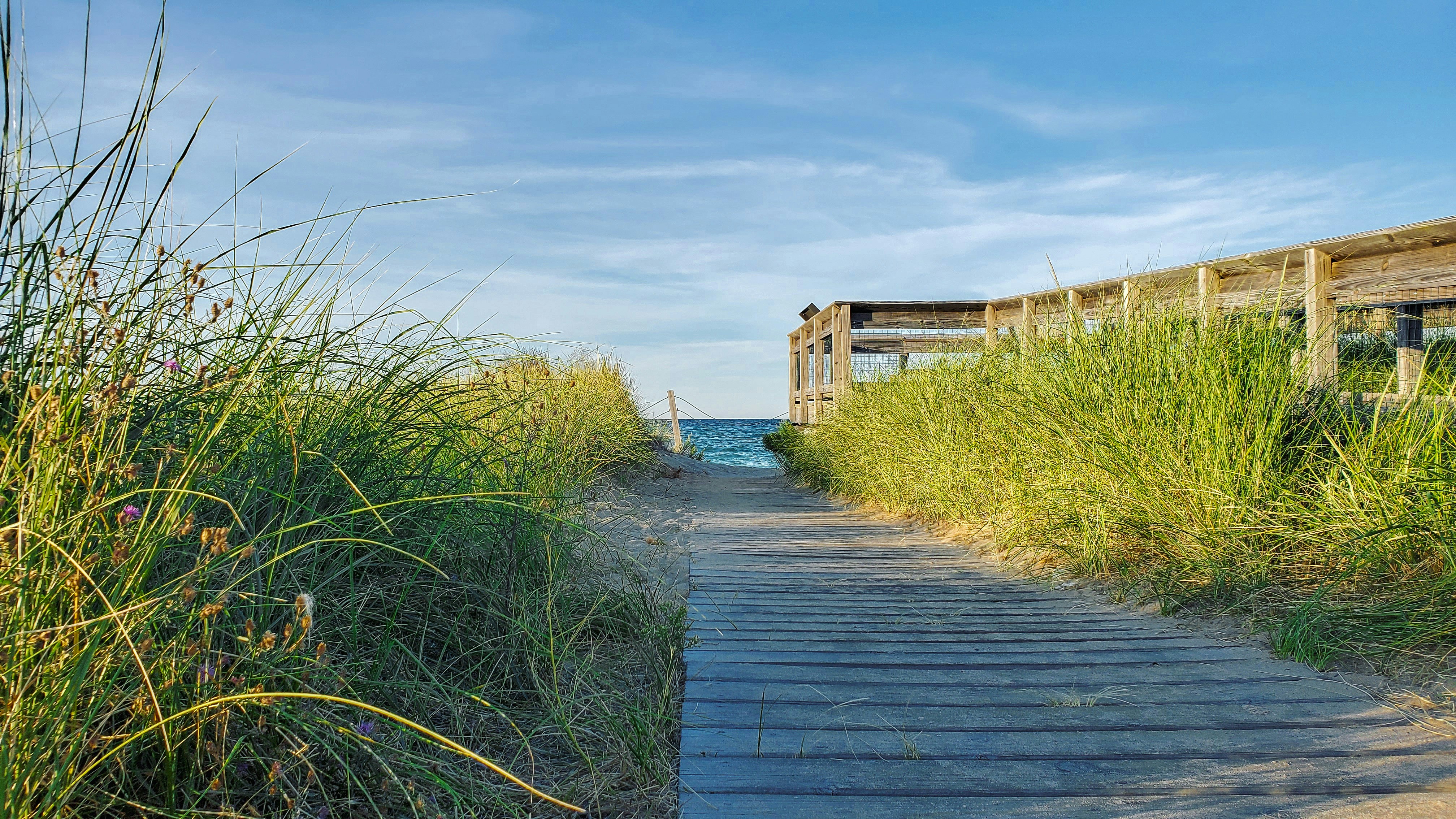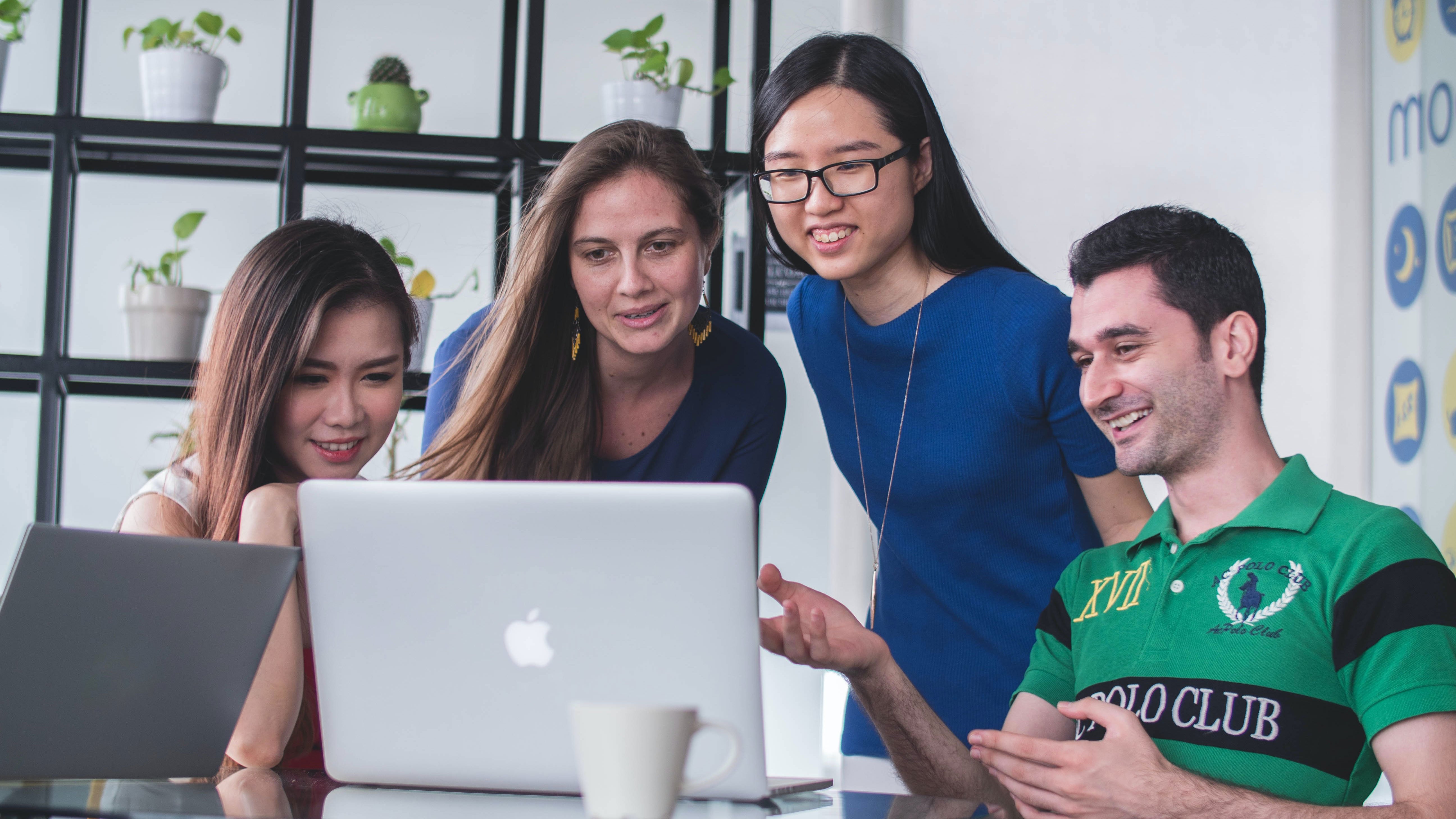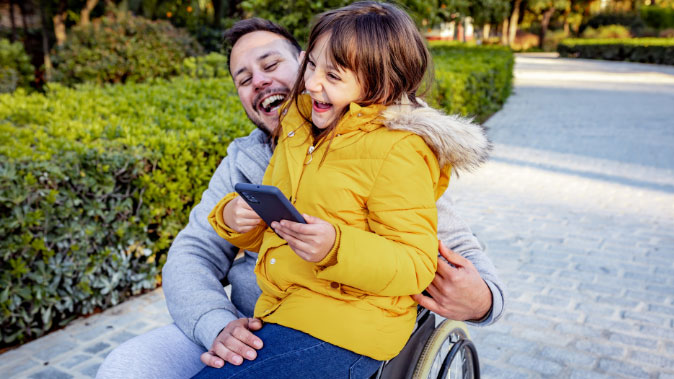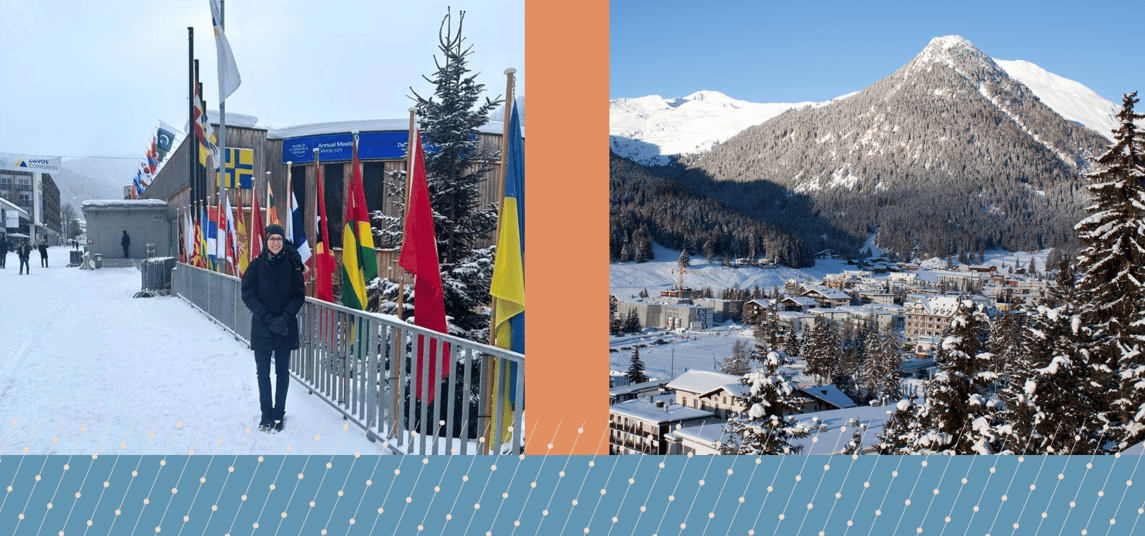
This resource is also available in French. Click here to access the French version.
Earlier this month, I attended the World Economic Forum’s 54 Annual Meeting in Davos, Switzerland for the first time. I gained a more nuanced set of tools for how to engage across different “languages,” and this thought piece unpacks them.
I was in this privileged space because Tamarack is one of the Schwab Foundation’s inaugural Collective Social Innovation awardees, along with MapBiomas (Brazil), ProjectTogether (Germany), and Punjab Education Collective (India).
The week began and ended with others in the Schwab social innovation community. Among their innovations are ones to design and implement national public policies that promote social and solidarity economy, to protect 35 million hectares of tropical rainforests under Indigenous people’s stewardship and to foster youth-centered systemic change.
And in between the transformative hours in this community was time in the Annual Meeting, a multi-leveled, high-security, AI and technology-focused experience where I honed the new tools - and where I was reminded that community is the foundation of what we need today).
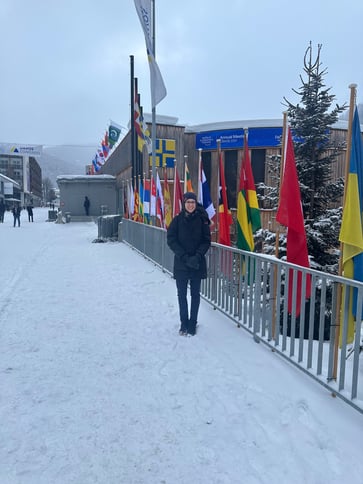
On the languages we speak
One of the first people I met in Davos speaks Spanish as his first language. I speak Spanish like someone who was once fluent but hasn’t practiced much in the last 15 years. I can talk about books and the weather, but I can’t talk with any depth about seeding community partnerships or building trust across sectors or achieving equitable outcomes. These kinds of conversations require massive mental energy. During that encounter (and every time I spoke with someone in my first language but not theirs), I felt gratitude for how they accommodated me. Questions I’ll be asking moving forward include:
- What do I know about the languages that those around me speak?
- How can I foster spaces where everyone can share most fully?
- How can I use pacing, visuals, and other tools to make what I share more accessible?
A day later, in a session on financial vulnerabilities, I thought about language again.
In my work, financial vulnerabilities is about everyone having access to accessible, affordable, non-exploitative ways of accessing and growing financial capital.
The panelists in this session used financial vulnerabilities differently. To them, the words refer to the risks put on financial institutions by high interest rates and price volatility.
The panelists used the word “equity” a lot too, and not in the context I use it– the context of giving everyone what they need to be successful, even if that means giving some people more opportunities and other resources than others. In that session, the word equity most often referred to the ownership interest in a business or other asset.
I use many words with assumptions about what they signal, and so do the other humans on that panel that morning. I shared this observation with one of the panelists after the session. We talked for a while and ended with agreement that the meanings that we give to words come from our daily exposures, experiences, and goals.
Working across languages, sectors, generations, and places asks us to be keen observers. We have to note when the daily realities of the people we meet prompt them to use different words. (Or to use the same words, but with vastly different meanings.)
We can’t always be proficient in the language of our collaborators, but we can bring the tool of questions:
- What measurement tools do we have, especially as related to the impacts of work on the planet and on people from equity deserving groups?
- What identities and experiences do I bring that my collaborators might not?
- What words can I use to build connection and reflection, rather than frustration, guilt or defensiveness?
- How can I encourage others to speak up when (inevitably) we aren’t sure we understand one another?
At Tamarack’s June 2023 Gathering on Treaty 6 Territory, Cheryl Whiskeyjack noted that many racialized, indigenous, Muslim, 2SLGBTQIA+, disabled, and official minority language people live in two worlds. Those of us who don’t hold these identities are called to step afoot into that world. Not meet in the middle. Not just dip a toe. Step fully into the unfamiliar.
Leaving my intensive immersion into other industries and sectors in Davos, I am working to apply this wisdom in yet another way. I am recommitting to trying to understand other people’s language.
On how we work together
In Davos, I met business leaders, social innovators, and heads of state committed to a more just and peaceful world, for all living things. They had different motivations, values, lived experiences, roles and theories of how we get there but they all yearned for– in the words of Heather McGee– “nice things” for people and places. Many were overwhelmed by the depth and breadth of our world’s inequities. Many felt tentative about what they could say or do. Many felt pulled in too many directions to do anything.
A lot of people are doing and thinking really good things. What’s missing is the coordination of all of these good things. In an era when divisiveness and disconnection is a feature of our lives, there’s never been a more important time for partnerships–and in particular local partnerships. In Davos, I received and asked some questions that moved me from small talk (or no talk) to conversations that felt intimate, imaginative, and important. Moving forward, I’ll be posing questions like:
- Who has shaped you most?
- What experiences have shaped you?
- What is your north star? What's the world that you're trying to create?
- What is something that I don’t about you?
- What could we do together?
Most of the people I met in Davos were attentive, keen to connect, and unsatisfied with the status quo. They could name things that caused them grief or pain. Almost everyone I’ve written to since returning has written back – and has committed to talking again. The work ahead of me is about bridging into partnership with people who have lived different lives than me. The convergence of our experiences is where innovation and progress lies.
On gratitude
We were exceptionally cared for in Davos. The bathrooms and meeting spaces were clean and welcoming, we had plenty of food and water, and we had places to leave our coats and boots when we came in from the cold.
As I write this, billions of people lack access to these basic human rights.
Thousands of people worked behind the scenes (and quietly on the edges of the meeting spaces) to make the 54th Annual "Davos Experience" possible. Thank you to the people who work in food services, childcare, security, hospitality, janitorial roles. Without you, the opportunity for greater connection and solidarity does not exist.
Laura Schnurr, Jess Gilligan, and Rucha Pande offered edits on this blog post. Antoinette Brind'Amour translated it from English to French.
Related:
Danya's videos from Davos on Instagram
Danya's videos from Davos on Linkedin
In good company: The collective social innovation award by Liz Weaver
Five reflections from the 2023 WEF and five implications for changemakers by Liz Weaver and Danya Pastuszek
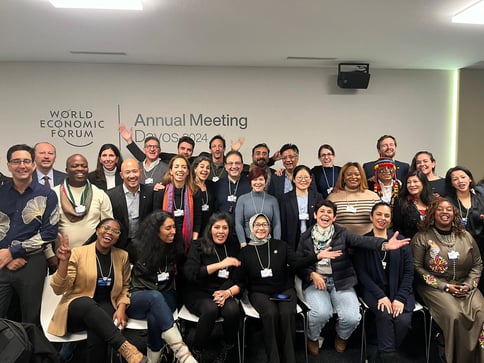
.png?width=725&height=276&name=Event%20Promo%20Banners%20(1).png)

